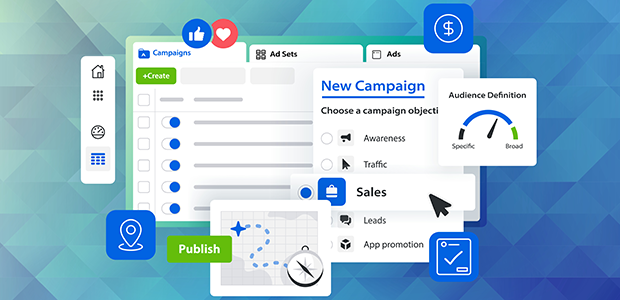
How to maximise your small business marketing budget
In the world of entrepreneurship, small businesses often find themselves grappling with a common challenge: how to stretch a modest marketing budget to deliver maximum impact.
As the business landscape continues to evolve and becomes more competitive, the need for effective marketing has never been greater. However, the key lies not in how much money a company has to dedicate to marketing, but rather in how they allocate and utilise their budget to garner maximum results.
Here are some of the most crucial steps you should be taking as a small business owner to unlock the full potential of your marketing budget.
Understand your audience and goals
Defining your target audience is vital for maximising your marketing budget.
You will most likely be operating with limited resources, including time, money, and manpower. Therefore, by clearly defining your target audience, you can focus your marketing efforts and resources on reaching those most likely to convert into customers.
This targeted approach ensures your resources are allocated efficiently, minimising the amount of budget you potentially waste on reaching irrelevant or uninterested audiences.
It’s also important to set clear and achievable goals to gain a sense of direction. Not only will this allow you to align your marketing efforts with your overarching business objectives, but it will also ensure every pound spent contributes meaningfully to your growth journey. Without clear goals, your marketing activities risk becoming disjointed and ineffective, resulting in wasted resources and missed opportunities.
Focus on cost-effective channels
Focusing on cost-effective channels is another useful strategy for getting the most mileage out of a small marketing budget.
Email marketing, for example, is one of the best low-cost marketing strategies and allows you to reach a lot of people while keeping cost low, with 4.3 billion people using email regularly.
Social media marketing is another extremely cost-effective digital marketing tool and lets you grow your online presence with minimal or no spending. Most platforms, including Facebook, Twitter, and Instagram, are free to sign up to and use, meaning you can start posting content without any upfront costs.
These platforms also offer highly targeted advertising options, allowing you to reach specific demographics, interests, behaviours, and geographic locations. This precise targeting ensures your marketing messages are delivered to the most relevant audience segments, maximising the impact of advertising spend.
By leveraging affordable advertising options, you can achieve significant results with minimum investment and get the most ‘bang for your buck’.
Prioritise high-ROI strategies
Return on Investment [ROI] is a fundamental concept in marketing that measures the effectiveness and profitability of a campaign or strategy. It provides a clear picture of how much value a marketing initiative has delivered in comparison to the investment made, and this allows you to assess the success of your campaigns, make data-driven decisions and maximise the profitability of your strategy.
With this data at the ready, you can start to focus on and prioritise the marketing approaches with the most proven ROI. This will help you stretch your budget further and avoid wasting resources on activities less likely to deliver positive results.
By leveraging data insights, you can make marketing decisions based on real evidence instead of guesswork or intuition, and you will more easily be able to identify opportunities and refine your strategy to maximise returns.
Focus on customer retention
Customer retention should be front and centre of any small business’ marketing campaign. Acquiring new customers can be significantly more expensive than retaining the ones you already have. In fact, studies have show that it can cost five times more to attract a new customer than to retain an existing one.
Existing customers are often more valuable than new ones over the long term. Repeat customers tend to spend more, make larger purchases, and are more likely to try new products or services. Therefore, by nurturing relationships with loyal customers, you can increase their lifetime value and maximise the return on investment from your marketing.
Satisfied customers are more likely to recommend your business to friends, family, and colleagues, and positive word-of-mouth referrals can be a powerful driver of new business and are often more trusted than traditional advertising.
By focusing on customer retention, you can leverage the advocacy of loyal customers to attract new ones without the additional marketing expenditure.
Stay flexible and adaptive
Staying flexible and adaptive is vital for maximising the effectiveness of your marketing budget. To remain competitive and relevant, you need to constantly be adapting your marketing strategies in response to shifts in the market. This flexibility will allow your business to capitalise on emerging opportunities, mitigate risks and stay ahead of the curve.
Consumer preferences and behaviours are also changing all the time, influenced by factors like demographic shifts, cultural trends, and societal values. You need to stay attuned to these changes and adapt your marketing strategies accordingly to resonate with your target audience.
By remaining flexible and responsive to evolving consumer preferences, you can ensure your marketing strategy remains relevant and effective, maximising the return on investment from your budget.
Do more with less
Small business owners face marketing challenges with limited resources, but that doesn’t mean you can’t learn to play the game, and it starts with making the most of your budget.
By being strategic with your approach, targeting your audience effectively and taking advantage of low and no-cost channels, you can make your marketing budget go further and make sure you are spending money on the things that will help your business grow.

